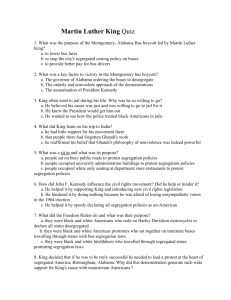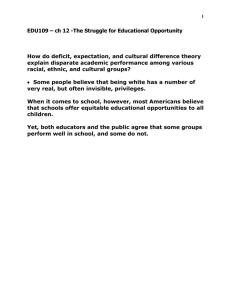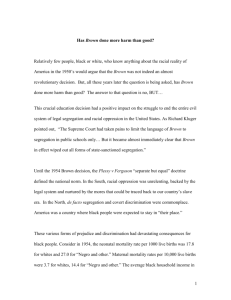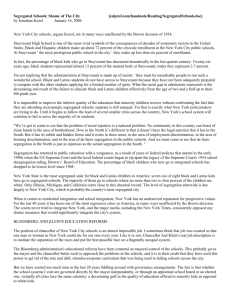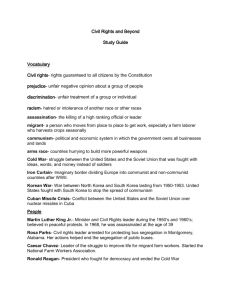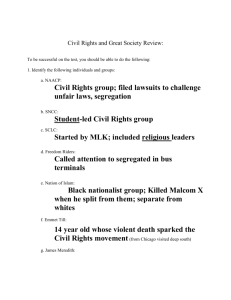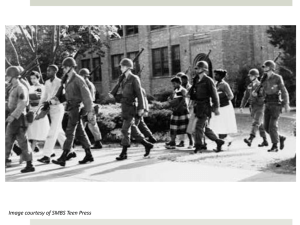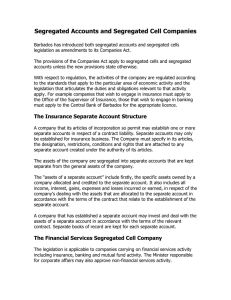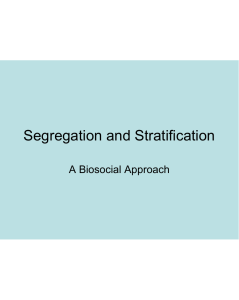A Blow to Equal Opportunity Education
advertisement
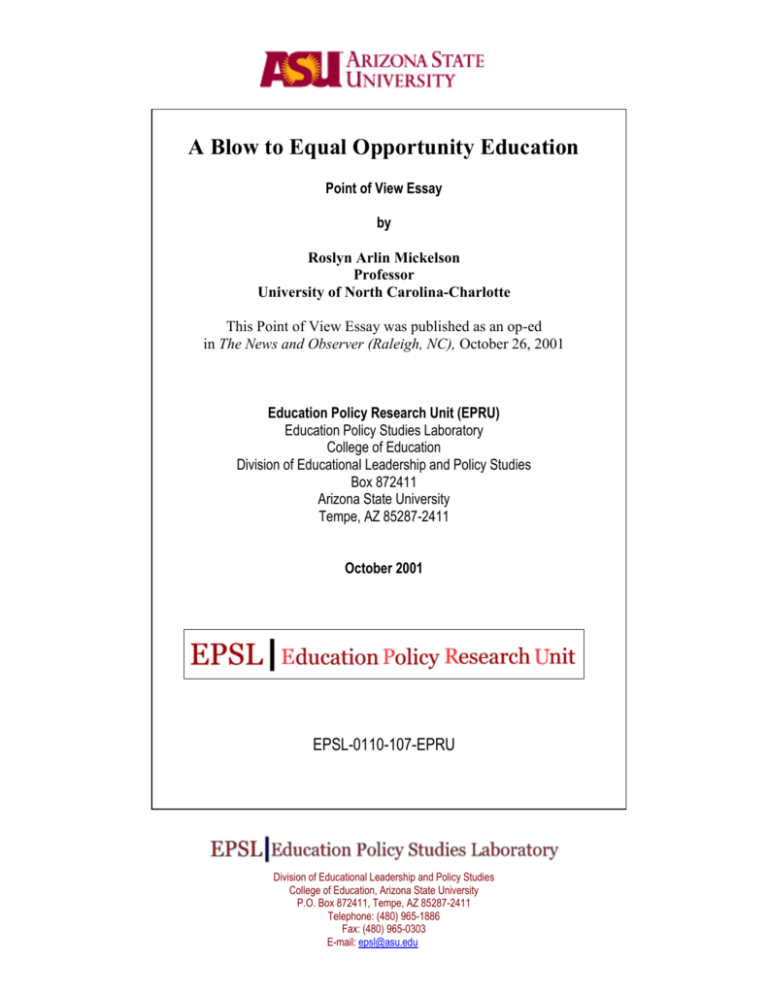
A Blow to Equal Opportunity Education Point of View Essay by Roslyn Arlin Mickelson Professor University of North Carolina-Charlotte This Point of View Essay was published as an op-ed in The News and Observer (Raleigh, NC), October 26, 2001 Education Policy Research Unit (EPRU) Education Policy Studies Laboratory College of Education Division of Educational Leadership and Policy Studies Box 872411 Arizona State University Tempe, AZ 85287-2411 October 2001 EPSL-0110-107-EPRU Division of Educational Leadership and Policy Studies College of Education, Arizona State University P.O. Box 872411, Tempe, AZ 85287-2411 Telephone: (480) 965-1886 Fax: (480) 965-0303 E-mail: epsl@asu.edu A blow to equal-opportunity education October 26, 2001 By ROSLYN ARLIN MICKELSON CHARLOTTE - The growing resegregation of North Carolina's schools received another legal imprimatur from the federal judiciary last month. By a seven-to-four vote, the conservative 4th Circuit Court of Appeals in Richmond ruled that the Charlotte-Mecklenburg School District was in fact unitary, that the district had done all that it could to eliminate the vestiges of Jim Crow education. Yet the court acknowledged that resegregation was increasing sharply in the Charlotte schools. The ruling will have widespread implications nationally. Charlotte-Mecklenburg is the district that gave rise to the U.S. Supreme Court's 1971 Swann ruling, which allowed busing for desegregation. In the aftermath, Charlotte developed a mandatory busing plan widely considered one of the nation's most successful. But the district began drifting toward resegregation in the 1980s, and the drift has intensified since. The reality is that today the district is segregated, and that segregation is harmful to the academic performance of both black and white students. My research shows that two types of segregation continue in the school district: first-generation segregation, which means students of different races attend separate schools; and second-generation segregation, which means students are segregated by race within a desegregated school because they are taught in racially identifiable ability groups or academic tracks. Both first- and second-generation segregation impair both black and white students' academic achievement, but blacks suffer the greater injury. These types of segregation exist throughout North Carolina and in the entire country, exacerbating the gap in achievement between blacks and whites. Compared to their peers who attend integrated elementary schools, high school students who attend segregated elementary schools earn lower grades and test scores. Furthermore, the more time both black and white students spend in segregated elementary schools, the lower their high school track placement. This remains true even with family background and individual characteristics held constant. Because more blacks spend time in segregated learning environments, they suffer more from its consequences than do whites. My research also shows how schools that are desegregated at the building level are often resegregated by academic track. Track placement is influenced by a student's race. Black students are more likely to be found in lower tracks than are white students with comparable prior achievement, family background and other characteristics. Why are segregated learning environments inferior to desegregated ones? Under conditions of scarcity, school districts allocate resources unequally. In North Carolina, segregated learning environments are inferior - not because their students are black, but because predominately white schools are more resource-rich. The predominately white schools have better qualified teachers, more stable teacher and student populations, more academically oriented students and more material resources. Now, the 4th Circuit majority has made a decision that will ultimately harm both black and white students, and we must deal with its consequences. Segregation is a very complex and vexing problem, and solutions do not rest in one specific action. A combination of factors needs to be examined, including school construction, school assignment boundaries, magnet school locations, staff and teacher assignment policies and practices, city and county government policies (like zoning and taxation) and transportation issues such as busing. We need continuous monitoring and evaluation of desegregation efforts by educators and citizens committed to equality of educational opportunity. The people of North Carolina cannot ignore the injustice of school segregation or its corrosive educational effects. We must work together to take the necessary steps to ensure that all students have access to the same high quality opportunities to learn. Separate is not equal, and it cannot be equal under a neighborhood assignment plan. 1 Roslyn Arlin Mickelson, Ph.D., teaches sociology and anthropology at UNC-Charlotte. She is the author of a recent article in the American Educational Research Journal titled "Subverting Swann." During the trial that was the subject of the appeals court ruling she served as a paid expert for the school district. 2 Division of Educational Leadership and Policy Studies College of Education, Arizona State University P.O. Box 872411, Tempe, AZ 85287-2411 Telephone: (480) 965-1886 Fax: (480) 965-0303 E-mail: epsl@asu.edu

